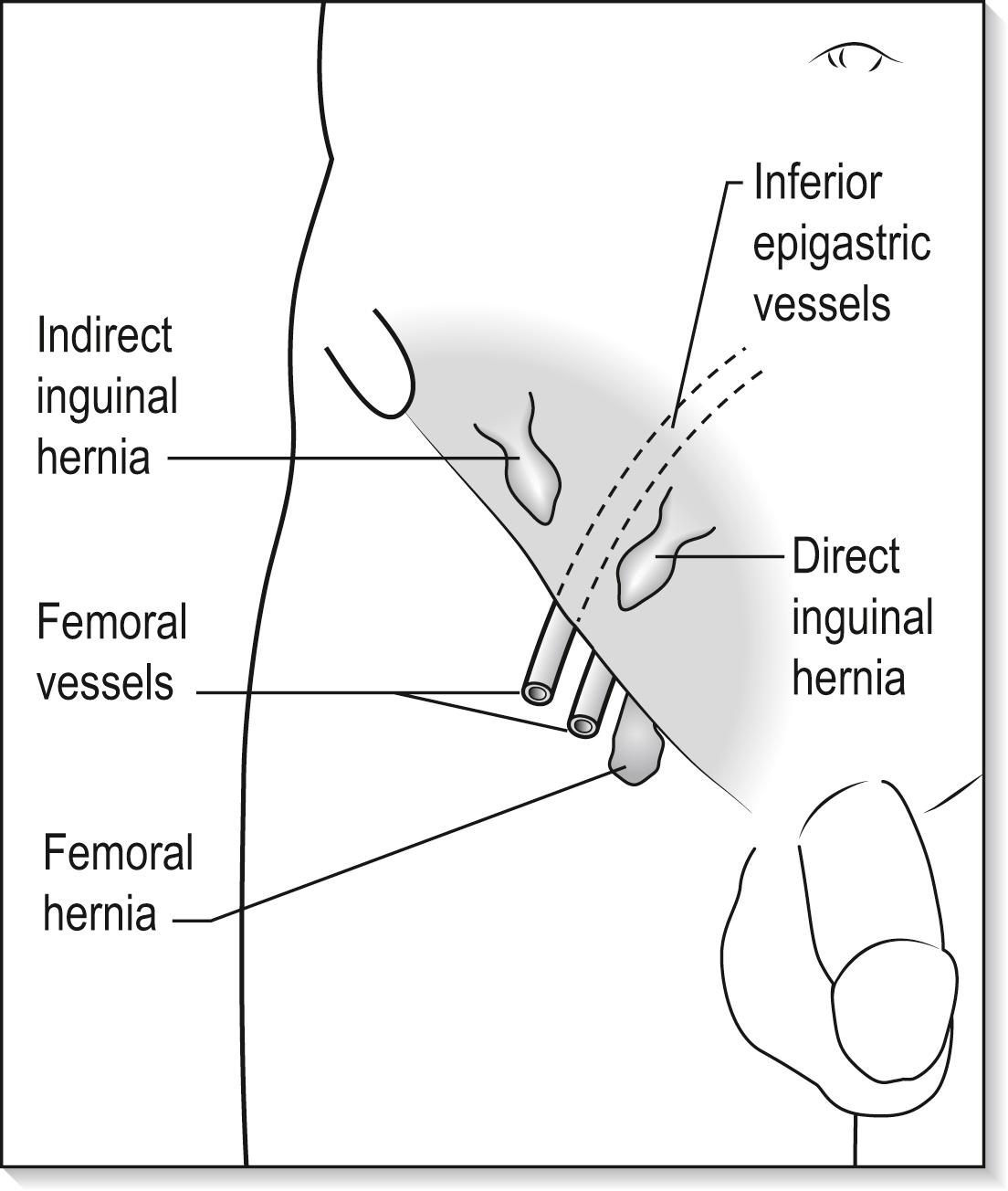Physical Address
304 North Cardinal St.
Dorchester Center, MA 02124
A diagnosis of symptomatic herniae mandates early surgical repair to avoid life-threatening complications.
Herniae may present as a reducible lump or may incarcerate, strangulate and/or present as bowel obstruction.
Femoral herniae are often misdiagnosed and, when complicated, are associated with high morbidity.
All herniae presenting with a complication should undergo prompt surgical repair.
A hernia is defined as the protrusion of a viscus or part of a viscus through a weakness in the wall of the containing cavity. It has an aperture, coverings (usually peritoneum and abdominal wall layers) and contents, which may be any intra-abdominal organ but are usually omentum or small bowel. Surgical treatment requires reduction of the contents and closure of the aperture, with reinforcement to prevent recurrence. The reinforcement may be sutures or mesh.
There are a number of described sites for herniae. This chapter focuses on the more common of these, but the principles of assessment and treatment apply to herniae at other sites.
Inguinal herniae are extremely common and account for 75% of all abdominal wall herniae. There is a lifetime risk of occurrence of 27% for men and 3% for women and an annual incidence of 130 per 100,000 population. Up to 9% of hernia repairs are performed urgently. Emergency repairs are more common in the elderly and carry greater morbidity than elective repairs.
As their name implies, direct inguinal herniae bulge directly through the posterior wall of the inguinal canal. They are caused by weak abdominal musculature, are common in the elderly and are frequently bilateral. They have large necks and hence seldom become irreducible or strangulate until they are of considerable size.
For indirect inguinal herniae, the hernial sac comes through the internal inguinal ring, travels the length of the inguinal canal and emerges from the external inguinal ring. Thus it usually lies above and medial to the symphysis pubis. Later the internal inguinal ring may stretch and the hernial sac and its contents may descend to and fill the scrotum, occasionally becoming very large. Because the internal inguinal ring is usually narrow, irreducibility is common. Indirect inguinal herniae occur throughout life ( e-Fig. 7.4.1 ).

Direct and indirect inguinal herniae may be distinguishable by simple clinical tests. When an indirect hernia is reduced, finger pressure over the site of the internal ring may hold it reduced; however, a direct inguinal hernia will flop out again unless several fingers or the side of the hand props up the entire length of the inguinal canal.
Femoral herniae appear lateral and inferior to the symphysis pubis. They are formed by the peritoneal sac and contents, which occupy the potential space of the femoral canal, medial to the femoral vein. They are proportionately more common in women and rarely large. Symptoms usually occur early and complications are common.
Both femoral canal areas should be closely examined in any patient presenting with abdominal pain or signs of bowel obstruction, as femoral herniae are frequently overlooked, especially in patients who are elderly and obese. Diagnosis of a femoral hernia mandates early surgery. Morbidity from emergency femoral hernia repair increases with the presence of small bowel obstruction. Mortality with emergency surgery can be as high as 5%.
Become a Clinical Tree membership for Full access and enjoy Unlimited articles
If you are a member. Log in here